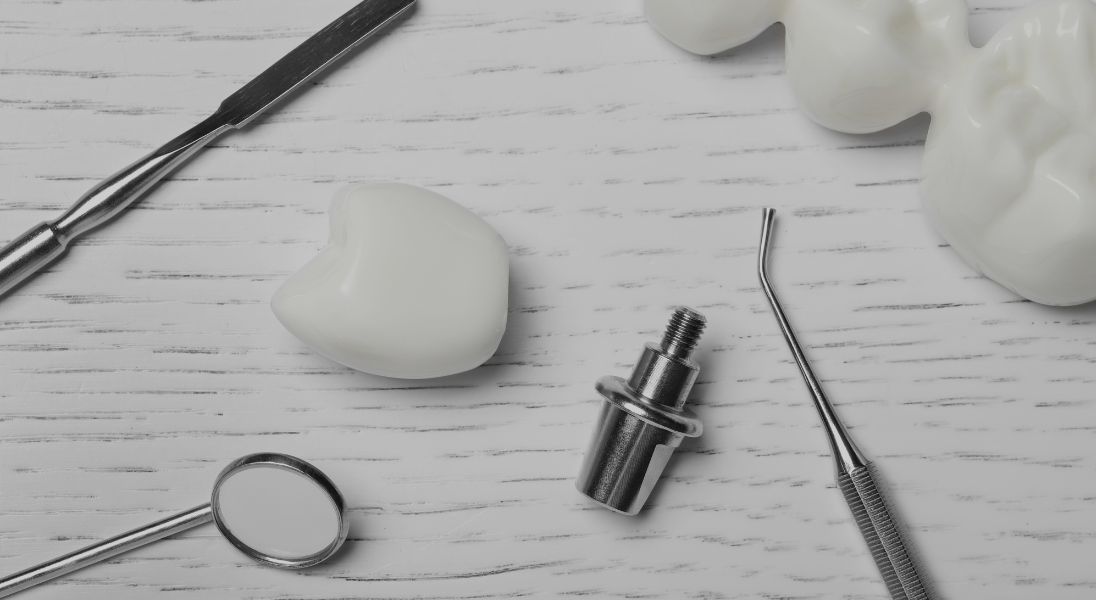Understanding the Abutment: The Link Between Implant and Restoration
Dental implants have made discoveries in the whole field of replacing lost teeth with restoration processes that are secure and reassuringly permanent. At the same time, another secret to successful implant restoration is the abutment, part of the implant, which is the connector bridging the implant fixture anchored in the jawbone to the visible restoration such as a crown, bridge, or denture. Fitting the proper abutment is vital for the implant-as-aesthetic design and, subsequently, its long-term health.
The abutment transfers force between the implant and the restoration. It contributes to the overall appearance and sensation of the replacement tooth and forms the foundation upon which the crown, bridge, or denture will be attached. Abutments are usually fabricated using biocompatible materials such as titanium, known for its strength and osseointegration capability (fusing with bone), or zirconia, appreciated for its toothlike appearance and aesthetic properties.
Stock Abutments: Efficiency and Affordability versus Limitations
Stock abutments are prefabricated, mass-produced components that have standard sizes and shapes. Their standardised design offers convenience and cost-effectiveness making them readily available. It’s cost-effective since they are mass-produced, and can be bought off-the-shelf resulting in speedy turnaround time.
However, there are drawbacks:
-
Fit is not ideal in some cases as they rarely work well for front teeth often creating gaps, poor tissue fit, and an odd look.
-
It is difficult with stock abutments to attain the ideal crown margin (the edge where the crown meets the gum). Poor margin placement may lead to complications like peri-implantitis - an inflammatory disorder of the tissues surrounding implants -- which may impinge loss and fail the implant.
-
When stock abutments cannot achieve the desired aesthetic outcome, which is especially critical for front teeth, the unnatural emergent profile within them will not help.
-
Stock abutments offer non-existent control of the gum tissue surrounding the area which is important for a natural and healthy appearance.
Custom Abutments: Precision, Aesthetics, and Long-Term Health
Custom abutments are custom-made to the small specs of every patient and patient needs at a dental laboratory. It mainly involves using detailed impressions or advanced digital scanner work done in the mouth of the patient. The result is a near-fit to that of the mouth for aesthetics.
The advantages of custom abutments are:
-
Custom abutments allow for an optimum fit maximising aesthetics, especially in the visible anterior region. They would be almost indispensable during final work replacing front teeth, thus yielding an entirely harmonious and natural appearance.
-
Custom abutments permit the control and placement of margins when the crown is made, improving hygiene conditions, reducing the risk of periimplantitis, and promoting gum health.
-
Adding security to the custom abutments, design features such as grooves or flat aspects could be added to minimise rotational movement.
-
Improved soft tissue management for a natural emergence profile at the gum's healthy contours around it enhances both aesthetics and implant health in the long run.
-
Since custom-made for angled implants, they offer appropriate alignment and adequate support for the restoration.
-
Strength and stability can be enhanced even with the custom size of these abutments for the entire implant rehabilitation.
-
Most custom abutments give larger areas for cementation which generally reduces the chances of detaching the crown.
-
Customisation allows for abutments with rigidity yet flexibility within a range to encourage better tissue preservation in nonfunctioning areas.
Materials for Custom Abutments
Abutments can also be made from biocompatible materials such as:
Titanium - A strong and biocompatible not too much-used metal for more osseointegration purposes.
Zirconia - Aesthetic tooth-colored ceramic material mostly searched in anterior applications. Zirconia abutment with a titanium base provides the best combination of the two worlds.
Gold - A material that was previously used, covers great biocompatibility. Still used today in certain circumstances.
Cost Considerations: Balancing Value and Budget
Custom abutments generally come at a higher price than stock abutments due to their tailored design and manufacturing process. However, advancements in CAD/CAM technology have made them more affordable. While the upfront cost may be greater, the long-term advantages of custom abutments such as enhanced aesthetics, improved hygiene, and a lower risk of complications often justify the price difference. Additionally, custom abutments can save time in the dental chair by streamlining procedures like cement removal and reducing tissue trauma.
Choosing the Best Option for Your Implant
Deciding between stock and custom abutments is a significant choice in implant dentistry. While stock abutments are a practical and cost-effective solution, custom abutments offer better aesthetics, fit, and long-term results, especially in the aesthetically sensitive anterior region. Ultimately, this decision should be a collaborative decision between the dentist and the patient.
MV Dental Laboratory is committed to providing expert consultation and high-quality restorations to support you in delivering exceptional patient care. Contact us today to discuss your specific needs.
